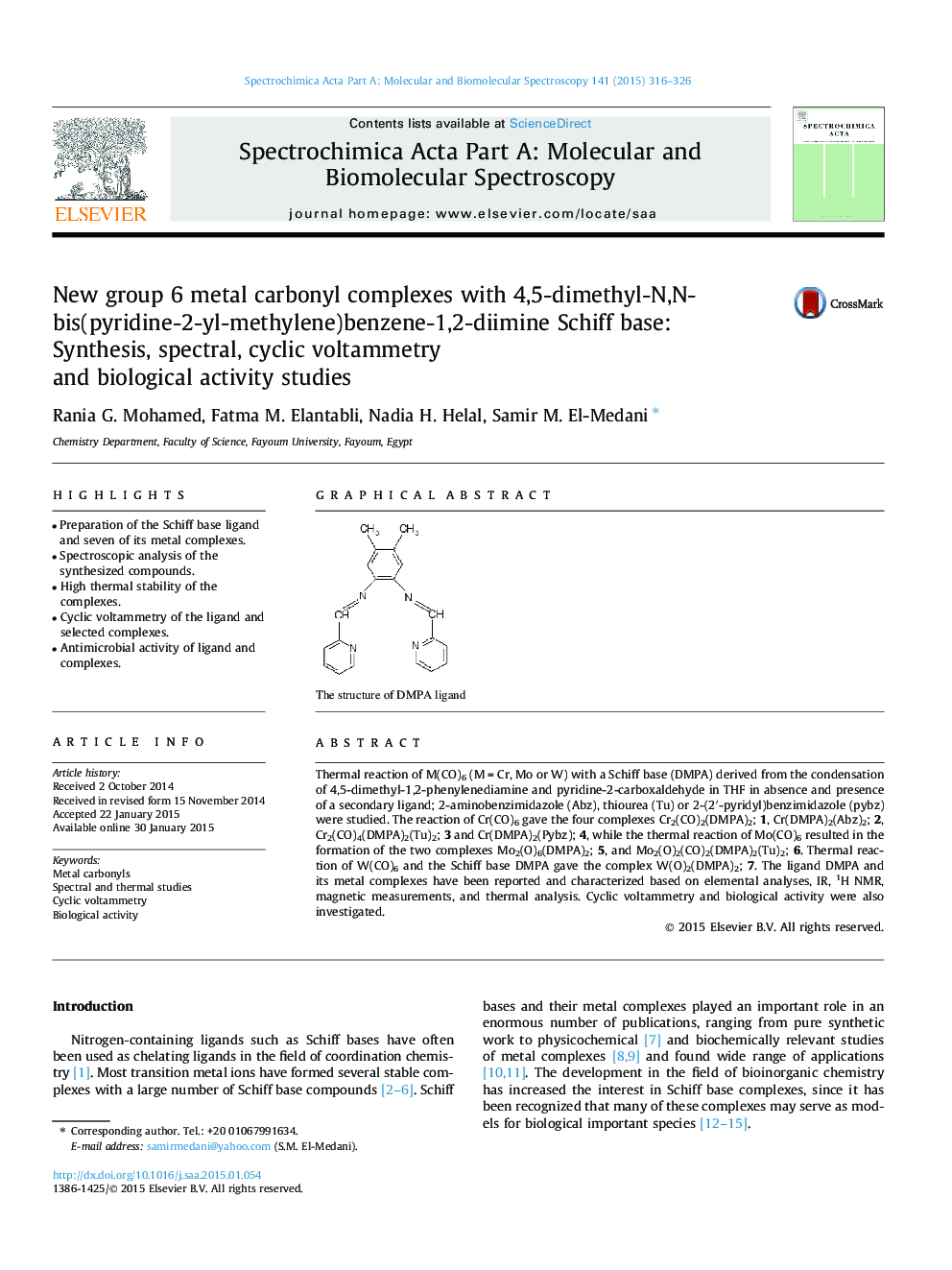| کد مقاله | کد نشریه | سال انتشار | مقاله انگلیسی | نسخه تمام متن |
|---|---|---|---|---|
| 1232420 | 1495228 | 2015 | 11 صفحه PDF | دانلود رایگان |

• Preparation of the Schiff base ligand and seven of its metal complexes.
• Spectroscopic analysis of the synthesized compounds.
• High thermal stability of the complexes.
• Cyclic voltammetry of the ligand and selected complexes.
• Antimicrobial activity of ligand and complexes.
Thermal reaction of M(CO)6 (M = Cr, Mo or W) with a Schiff base (DMPA) derived from the condensation of 4,5-dimethyl-1,2-phenylenediamine and pyridine-2-carboxaldehyde in THF in absence and presence of a secondary ligand; 2-aminobenzimidazole (Abz), thiourea (Tu) or 2-(2′-pyridyl)benzimidazole (pybz) were studied. The reaction of Cr(CO)6 gave the four complexes Cr2(CO)2(DMPA)2; 1, Cr(DMPA)2(Abz)2; 2, Cr2(CO)4(DMPA)2(Tu)2; 3 and Cr(DMPA)2(Pybz); 4, while the thermal reaction of Mo(CO)6 resulted in the formation of the two complexes Mo2(O)6(DMPA)2; 5, and Mo2(O)2(CO)2(DMPA)2(Tu)2; 6. Thermal reaction of W(CO)6 and the Schiff base DMPA gave the complex W(O)2(DMPA)2; 7. The ligand DMPA and its metal complexes have been reported and characterized based on elemental analyses, IR, 1H NMR, magnetic measurements, and thermal analysis. Cyclic voltammetry and biological activity were also investigated.
Figure optionsDownload as PowerPoint slide
Journal: Spectrochimica Acta Part A: Molecular and Biomolecular Spectroscopy - Volume 141, 15 April 2015, Pages 316–326